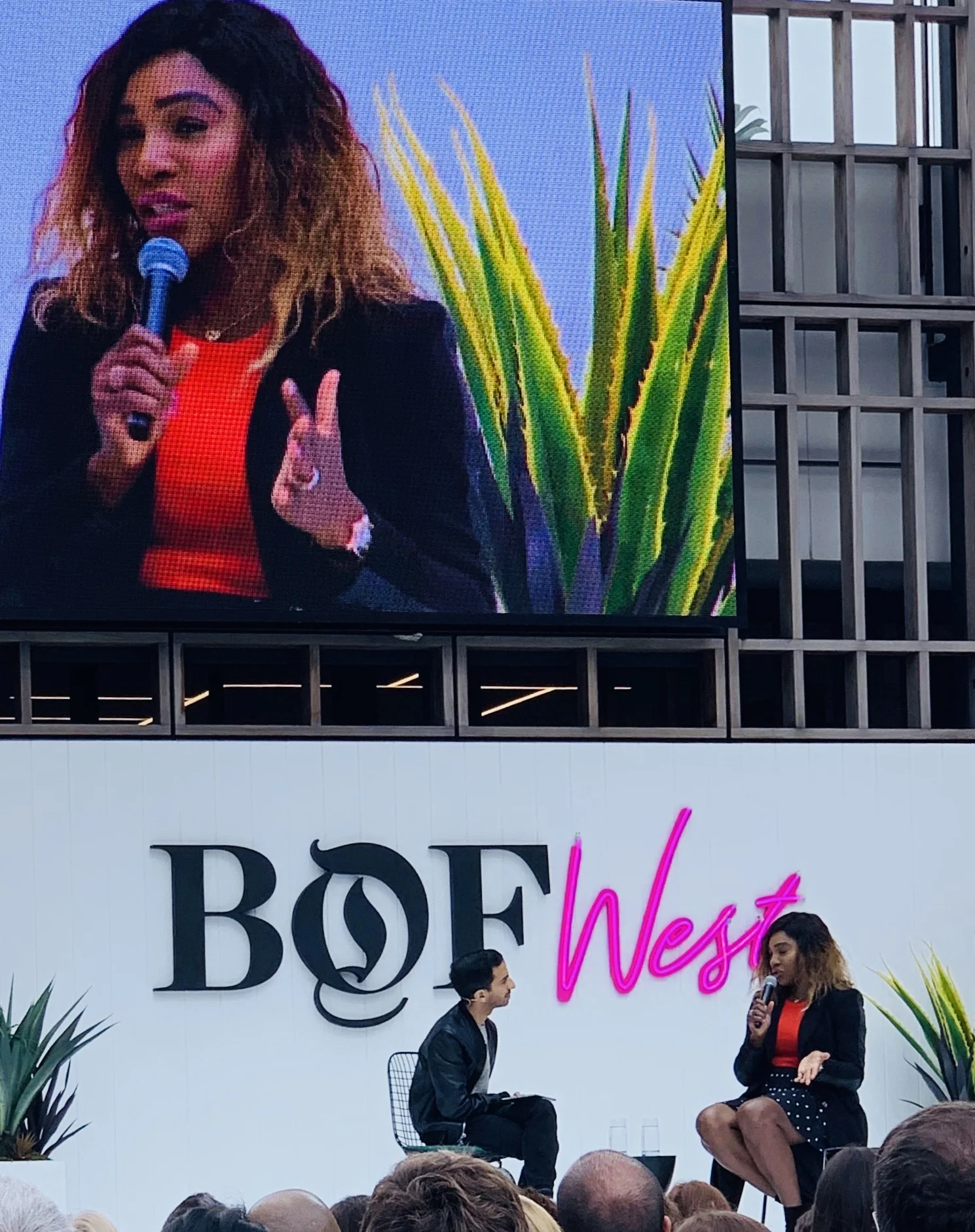The Business of Fashion, founded in 2007 by Imran Amed, offers informed and modern opinions on the trends and technologies that are redefining the fashion business. What started as a website has blossomed into a vast, international brand that offers industry professionals an extraordinary glimpse into their rapidly evolving industry.
We recently attended BoF West, a summit that explored the dynamic city of Los Angeles’ role in global fashion and trends. Held in the atrium of the newly-renovated and perennially-packed Westfield Century City, the event commanded the attention of industry professionals and passerby shoppers alike.
Ultimately, we learned from the event that the next wave of human experience design will be increasingly pro-consumer, pro-community and pro-advocacy. Meaningful brands that offer real value—in a million different ways—will always beat out the uninspired retailers of yesterday. Themes like wellness, inclusivity and sustainability are hotter than ever.
BoF West offered attendees insight into four distinct topics, with each panel facilitated by a different moderator and headlined by different industry bigwigs. Here’s a glimpse into each discussion:
1. Convergence: Why Different Industries are Colliding in Los Angeles
This discussion centered around why businesses are flocking to Los Angeles to scale, grow and thrive. A few reasons thrown around? Fabulous weather, brilliant people, built-in diversity and room to grow. San Francisco is too pricey. New York; too dense. Los Angeles, the panel agreed, offers excellent opportunity for cross pollination. (And reasonable rent.)
The panel consisted of Damian Bradfield, president of WeTransfer; Bettina Korek, executive director of Frieze Los Angeles; Rich Pierson and co-founder and CEO of Headspace. Rohan Silva, co-founder of Second Home, moderated.
Of note: Both WeTransfer and Headspace moved their businesses from Amsterdam and London, respectively, to Los Angeles.
2. The Social Power of the Red Carpet
This panel demonstrated that the red carpet is the perfect platform for social activism. After all, modern brands are increasingly choosing to stand for something. Why should celebrities and luxury brands buck that awesome trend?
Elizabeth Banks, who was dressed by ThredUp in support of Dress for Success, attended to prove a point. She noted that since eyes were always on her, why not use that celebrity to raise the profile of a charity or cause?
That’s exactly why Arianne Phillips and Carineh Martin, co-founders of RAD (Red Carpet Advocacy), created their organization. Instead of the typical pay-to-play red carpet business model, RAD flips the script on Hollywood events. As this New York Times headline suggests, the real question ought to be: “Who Are You Wearing and Where Did They Donate?”. Celebrities ask brands to stand with them in support of their charity of choice. And it works.
This panel was moderated by author Melissa Magsaysay.
3. Building Disruptive Direct-to-Consumer Brands
This panel offered a glimpse into D2C brands that bypassed wholesale and struck gold.
Panelists were Tim Brown, co-founder and co-CEO of All Birds, Hilary Coles of Hims & Hers, and Emma Grede, co-founder and CEO of Good American. The panel was moderated by BoF’s CCO, Nick Blunden.
One thing these big-name D2C brands had in common? Each company identified a major market opportunity.
Good American, for example, saw that larger women were being ignored. Social media might champion body positivity, but gorgeous, premium denim for plus-size women just didn’t exist. Good American proved with their extensive range of sizes that curves are beautiful, and the brand then sold $1 million worth of denim on its first day. (Yes, Khloe Kardashian is Grede’s business partner, but the product has reached women who aren’t keeping up with the Kardashians on E! or Instagram or anywhere else.
All Birds, too, saw an opportunity to create a sustainable shoe in a different way.
And Hims and Hers saw a $4 trillion wellness industry that had essentially nothing to offer the average American man. (They also offer products for women.)
All of these brands rely heavily on modern retail trends like community, feedback and customer service.
4. From Athlete to Entrepreneur: Lessons in Life and Business
Finally, Serena Williams and BoF CEO Imran Amed sat down for a one-on-one discussion. Williams, who’s perhaps the greatest athlete of all time, is also quite the entrepreneur.
She recently launched S by Serena, a fashion brand that she hopes will eventually touch almost every aspect of her customers’ lives. (She did not; however, end her contract with Nike. S by Serena does not make athletic clothing, and perhaps never will.
Inspired by brands like Glossier and Casper, Williams knows she’ll need to build a community and provide products that are worth buzzing about.
When Amed asked Williams: “Why fashion?”, the audience laughed. “It is such a hard business,” he added. Said Williams, “I love a challenge.” Her biggest one? To get folks who aren’t her fans to love her product because it’s a great product, not because she’s a celebrity. (That’s something Good American achieved.)
Williams has also launched her own venture capital firm. Her VC is going out of its way to invest in businesses owned by women and people of color. While her firm will always invest in a good idea, regardless or race or gender, Williams was troubled by just how hard it was for minorities to get funding.
Want to hear more? Check out this segment in this BoF West podcast.






